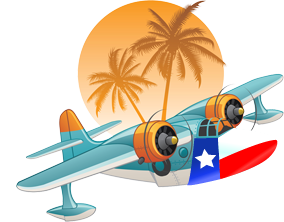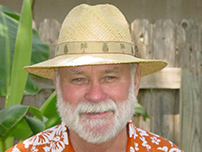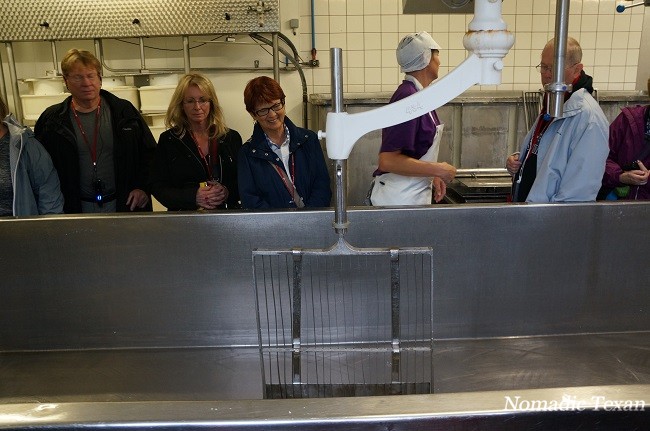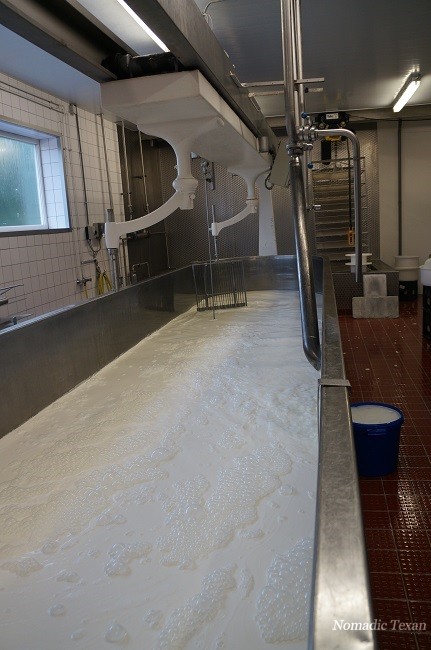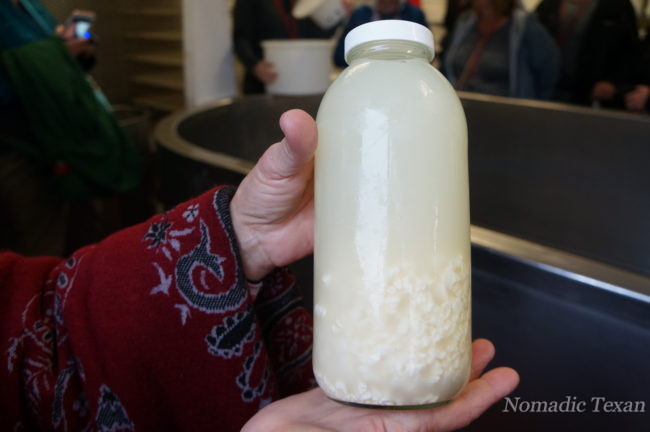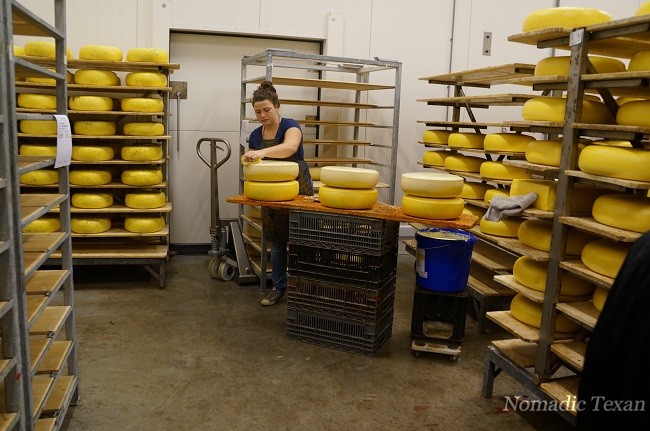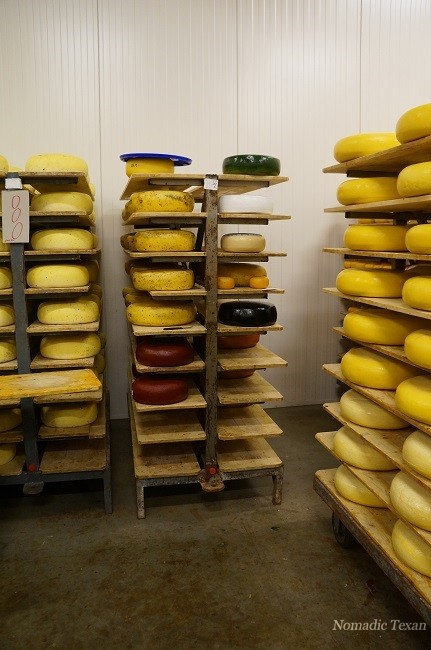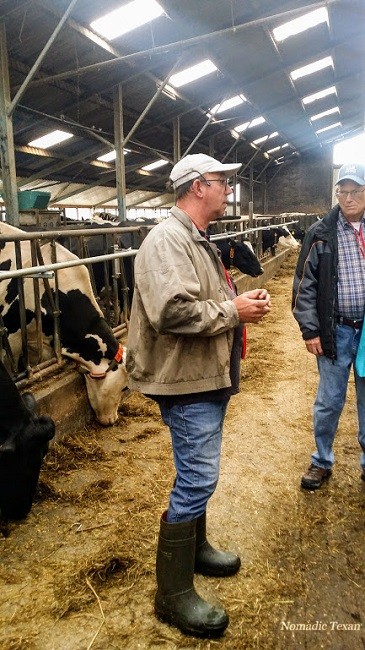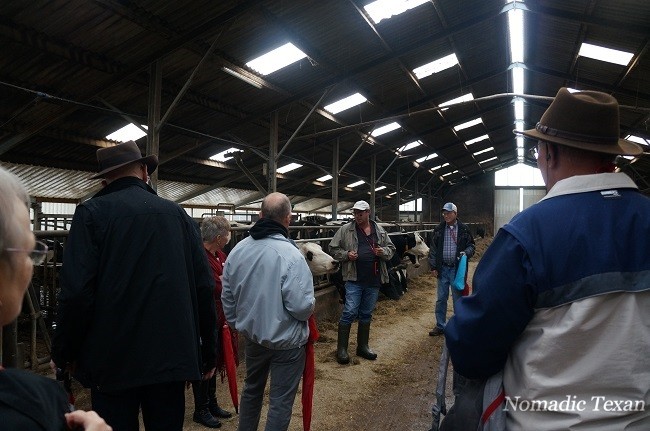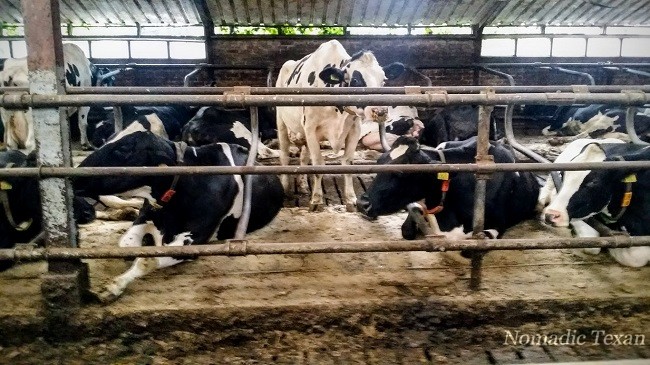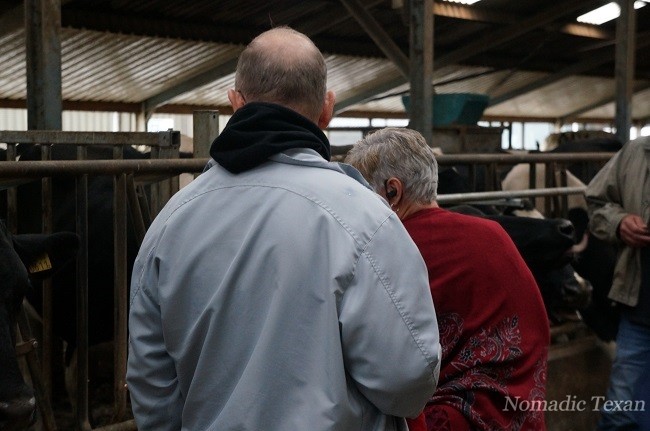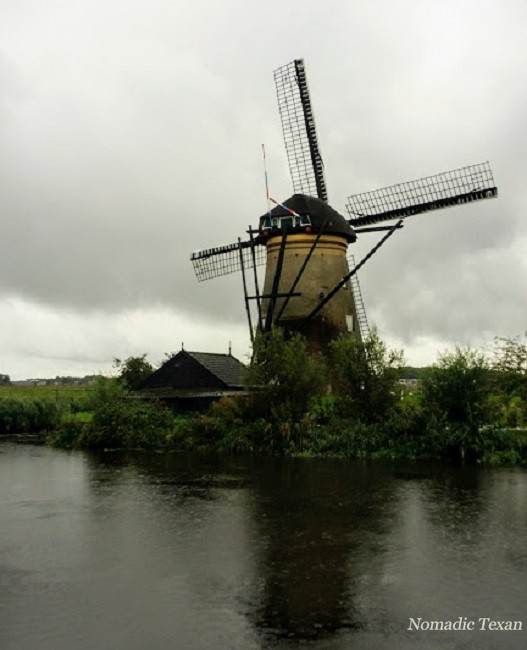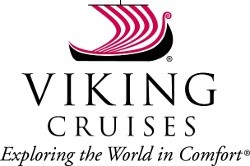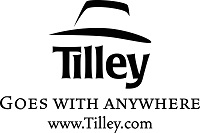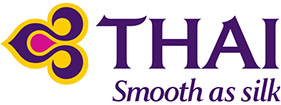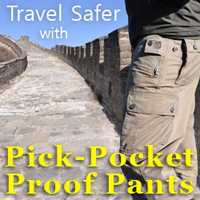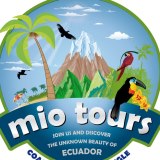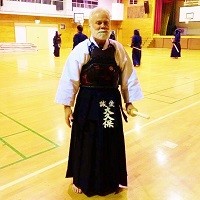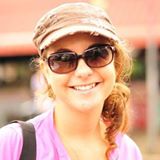Viking Cruises, Cologne Germany
On our second full day with our Rhine Getaway cruise on Viking River Cruises, we visited Cologne Germany and had a walking tour which included the Cologne Cathedral, Old Town and the St. Martin’s Church. As in most European cities the architecture was gorgeous and primarily filled with vintage buildings.
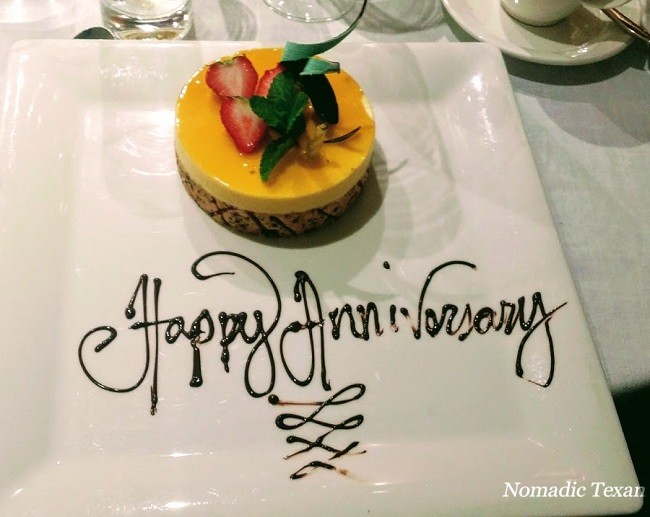
Anniversary Cake from The Viking Eir Staff
The primary reason we decided on the Rhine Getaway cruise was that our 39th wedding anniversary fell during the length of this cruise and it explored several countries we haven’t visited. I surprised Kim the second day, which was our actual anniversary with flowers, candy, fruit and a bottle of sparkling bubbly. What I didn’t know was the staff of the Viking Eir had a surprise for the both of us. That night at dinner they brought out this cake made from passion fruit. OMG was it delicious. They also serenaded us with a love song. It was quite a night and we split the cake with those passengers that dined with us. I think they were happy they chose to sit with us that night.
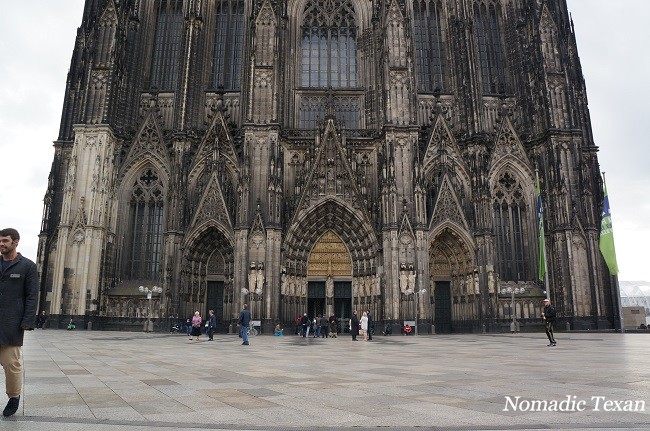
Front View of the Cologne Cathedral Church
The bus picked us up at the ship and took us into Cologne, passing all sorts of architecture, housing and retail structures along with transportation venues such as their train system and buses. Europe has a large step up on the US when it comes to mass transportation, just like Asia. We disembarked and followed our guide Peter from the bus to the Cologne Cathedral, which is located adjacent to the train station and Old Town. It is a magnificent structure, as are most of the churches in Europe. Cologne Cathedral is the fourth-tallest church building in the world at 157.4 m (516 ft). It’s construction started in August of 1248. As most buildings built centuries ago it is always being updated and repaired.
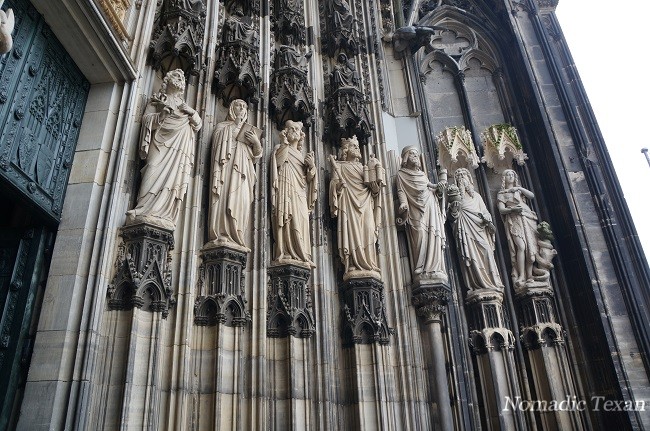
Cologne Sculptures to the Side of a Cathedral Door
It is the seat of the Archbishop of Cologne and of the administration of the Archdiocese of Cologne. It is a renowned monument of German Catholicism and Gothic architecture and was declared a UNESCO World Heritage Site in 1996. It is Germany’s most visited landmark, attracting an average of 20,000 people a day and currently the tallest twin-spired church at 157 m (515 ft) tall.
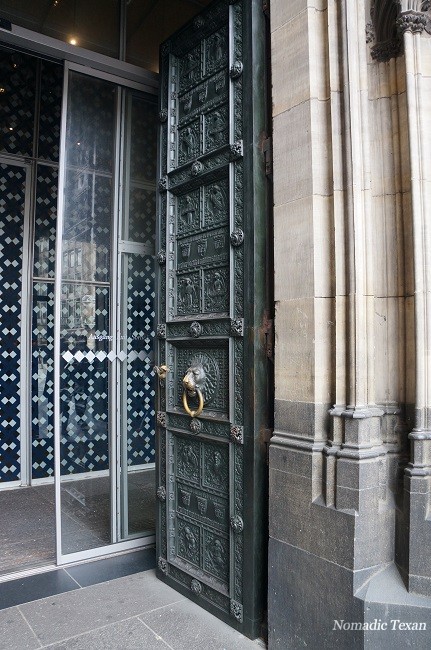
Cologne Cathedral Door
The cathedral suffered fourteen strikes by aerial bombs during World War II. Badly damaged, it nevertheless remained standing in an otherwise completely flattened city. The twin spires were an easily recognizable navigational landmark for Allied aircraft bombing.
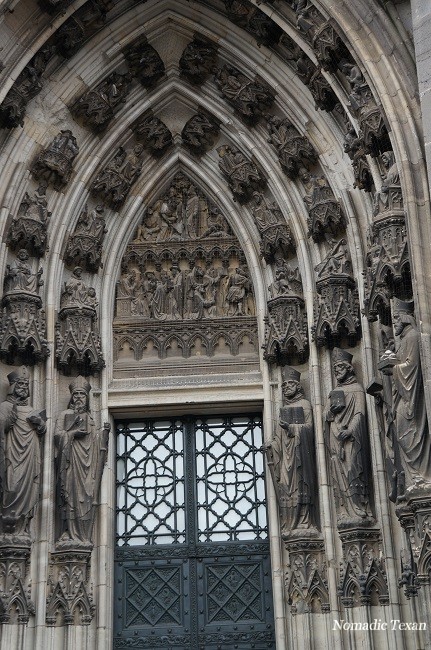
Example of a Cologne Cathedral Door with Sculptured Trim
The cathedral and the immediate area surrounding it was the site of intense tank skirmish between American tanks of the 3rd Armored Division and a Panther of Panzerbrigade 106 on March 6, 1945. The Panther successfully knocked out two Sherman tanks killing three men before it was demolished by a T26E3 Pershing hours later. The destroyed Panther was later put on exhibit at the base of the cathedral for the rest of the war in Europe.
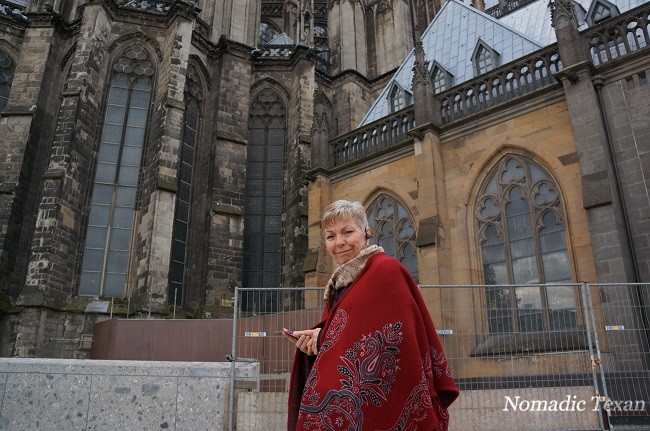
Cologne Cathedral with Kim
Repairs were completed in 1956. An emergency repair on the northwest tower’s foundation carried out in 1944 using poor-quality brick, taken from a nearby demolished structure remained evident until 2005 as a reminder of the war, when it was decided to bring back the segment to its initial appearance.
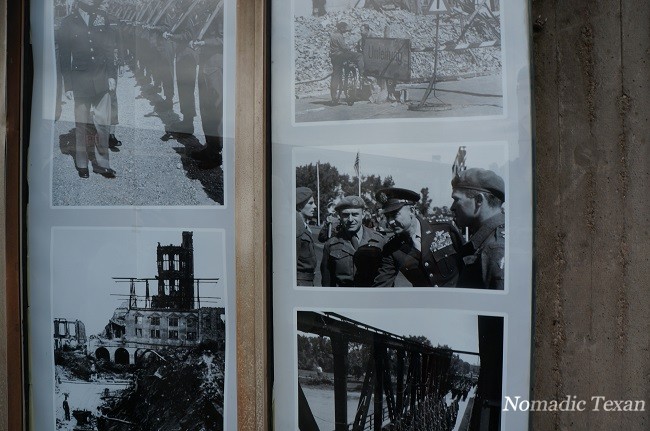
Cologne Cathedral Photos from World War II with General Dwight D Eisenhower
Preservation work is continually being administered in one or another section of the building, which is rarely completely free of scaffolding, as wind, rain, and pollution slowly attack the stones. The Dombauhütte, established to build the cathedral and keep it in repair, is said to use the best stonemasons of the Rhineland.
Behind the cathedral is an area that memorializes the Archbishops and Cardinals from the history of the Church. As we walked past I saw several parishioners offering prayers for the church officials that had passed on, or at least I assumed that was their intent. Obviously they could have been praying for relatives or themselves, but given the location I think my thought was legitimate.

Cologne Cathedral Burial Ground Tributes to Archbishops, Cardinals and Church Dignitaries
After touring the Cathedral and visiting the exterior, we continued our walking tour. In the back of the Cathedral was a young gentleman blowing huge bubbles to the delight of all children both young and old. I was enthralled by the beauty of such a simple task. Younger children kept running around trying to burst the bubbles and it was a genuine treat.
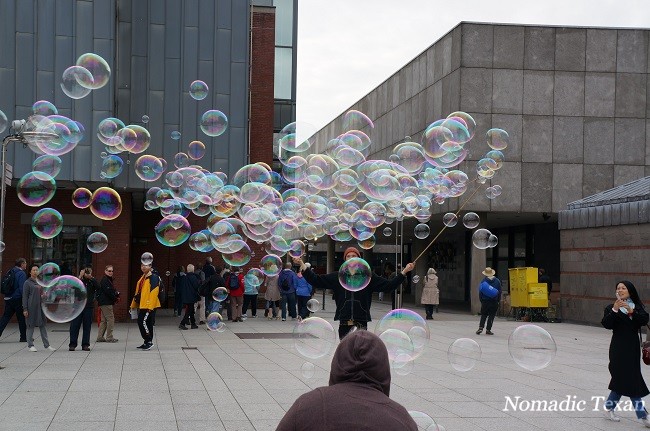
Gentleman Blowing Bubbles at the Rear of the Cologne Cathedral
Once we left the Cathedral and began walking through Old Town, we encountered several Brauhauses, The German version of a brewery and or bar. They served any one of age and several members of our tour sampled the adult beverages once we finished. I was afraid I would get lost so during the tour rather than run into the chocolate shop and sample their goods, hence we waited and of course I forgot to visit the chocolate shop later on.
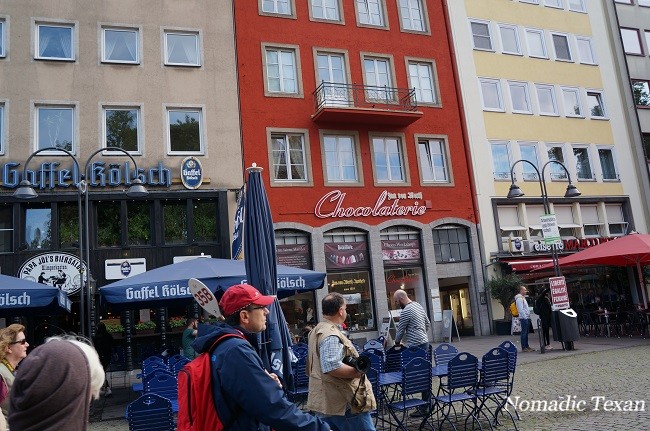
Cologne Brauhaus Gaffel Kolsch and Chocolate Shop with Viking Guide Peter
Another brauhaus with a stellar reputation, specializing in kolsch (a clear, top-fermented beer with a bright, straw-yellow hue similar to other beers brewed from mainly Pilsener malt.) according to our guide. Reviews also state their Bratwurst is excellent.
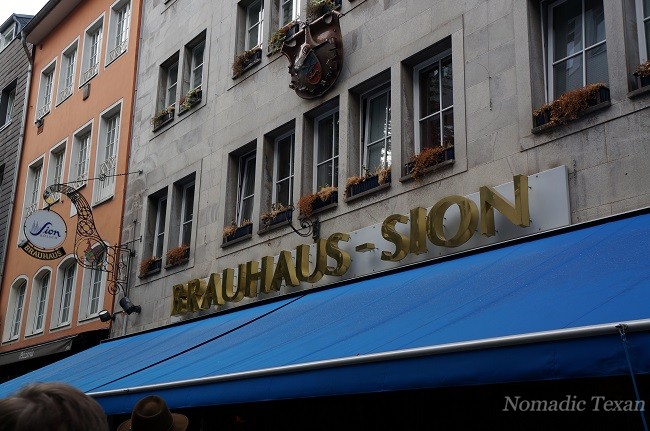
Cologne Brauhaus Sion
Our guide Peter informed us that all servers at Oktoberfest were to carry a tray similar to this with eleven different beers. That seems to be a large sampling of flavors in my humble opinion. I am not sure even in my younger days, I could have managed to down that many beverages. Apparently though it is a normal tradition and many beer imbibers drink this amount.

Cologne Brauhaus Normal Tray with 11 Glasses
Cologne had several museums both historical and art fashioned. Of note is the Roman Germanic museum which has a piece dating back to 220 AD. It’s the Dionysus mosaic. It was discovered in 1941 by workers building an air raid shelter. In addition these large heavy stones pictured below are on display. I can’t imagine how heavy they are or how strong their supports have to be.

Stones from the Cologne Roman Germanic Museum
The Museum Ludwig is a collection of modern art and includes Pop, abstract and surrealist art from Dali to Warhol to Lichtenstein and has one of the largest Picasso collections in Europe. The Museum Ludwig houses the main positions and trends in modern and contemporary art from the dawn of the 20th century up to the present.
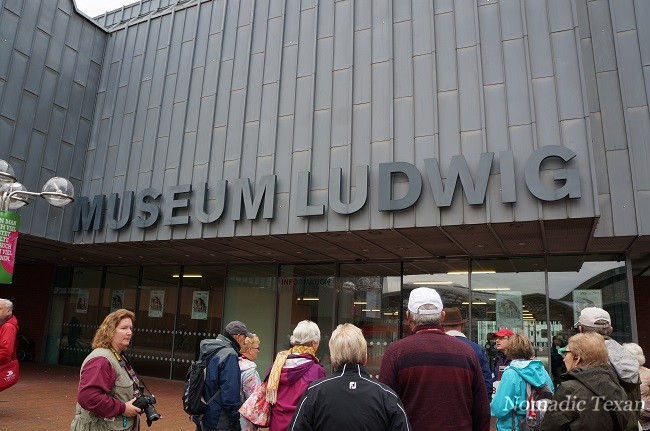
Museum Ludwig
The museum I didn’t get to was the Chocolate museum which chronicles the 3,000 year history of chocolate beginning with the ancient American cultures such as the Mayas and Aztecs, proceeding through the baroque and industrialization periods and ending in the fine chocolate products of the modern day. The diversity of 5,000-years of cocoa’s cultural history is shown as well as modern chocolate production from the cocoa bean through to praline chocolate confectionery.
In the glass-walled production facility and chocolate workshop, visitors can experience how chocolate products are crafted in both mechanized and manual processes. How chocolate is made today is demonstrated in the production facility in the bow of the boat-styled museum building, which also houses the chocolate fountain. The fountain was specially constructed for the museum, an artistic structure filled with 200 kg of warm, liquid chocolate. Smooth, warm Lindt chocolate flows from four stainless steel spouts into a fountain bowl.
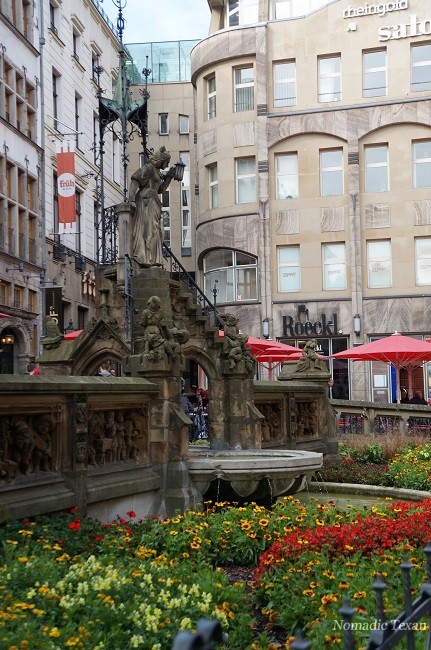
Cologne Old Town Forest of the Dolls Side View
In the center of Old Town was this sculpture “Forest of the Dolls”. It was designed as a tribute to the young children, who bought water to the surface through small shafts in buckets from the surrounding Rhineland. The children were paid for this work until the 1500’s when pumps started bringing the water to the surface. This forced the children to live in the streets or underground tunnels and they became beggars. The other story is that elves used to do all the repair work after World War II at night, so the workers could be lazy and drink adult beverages all day. This may hold some truth as the city is filled with brauhauses. This sculpture is dedicated to both stories and contains a plethora of elves in various forms.
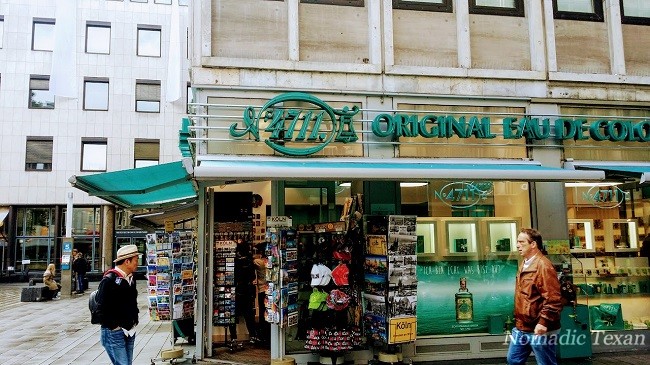
Eau de Cologne Retail Store #4711
It was fascinating to see this retail store pointed out on tour by our guide. When I was a young man this cologne was very popular and sold all over the country. I had no idea it originated in Cologne Germany in 1709. Eau de cologne contains a mixture of citrus oils including oils of lemon, orange, tangerine, clementine, bergamot, lime, grapefruit, blood orange and bitter orange. It can also contain oils of neroli, lavender, rosemary, thyme, oregano, petitgrain (orange leaf), jasmine, olive, oleaster and tobacco. In contemporary American English usage, the term “cologne” has become a generic term for perfumes usually marketed towards men.
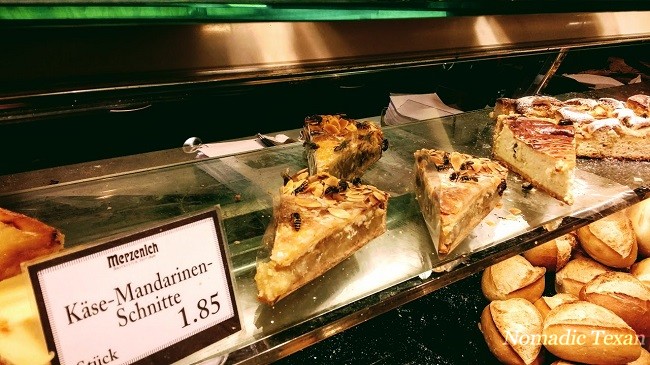
Open Air Retail Pastry Store with a Plethora of Bees
As we continued walking around Old Town we came upon an open-aired pastry shop that appeared to be very successful. Customers filled the sales floor and were interacting with sale people. I didn’t notice at first that all the pastry cases were full of sweet pastries covered in bees. I’m not entirely sure of the benefit or the attraction, but I have never seen so many bees in one place except in a hive. I was awestruck and took several photos and one short video. This was a first for me, but apparently the customers were used to this as they interacted with the sales force without showing any emotion or distaste at the bees. The bees literally covered all the various cakes, breads and other offer rings. It still puzzles me.
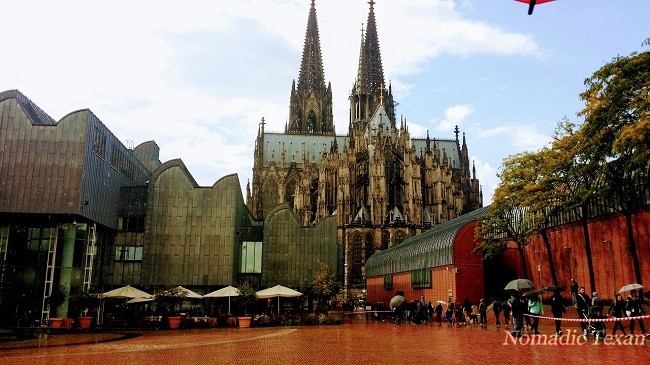
Cologne Cathedral from the Festival
As we walked back to the place to meet the shuttle bus across the river we encountered a festival of some type that seemed to specialize in children’s fantasy, toys, clothing and other merchandise. It began raining softly and most of the customers dispersed. That gave me an opportunity to take this photo with the wet bricks and Cathedral in the background. It’s one of my favorite photos of our cruise!
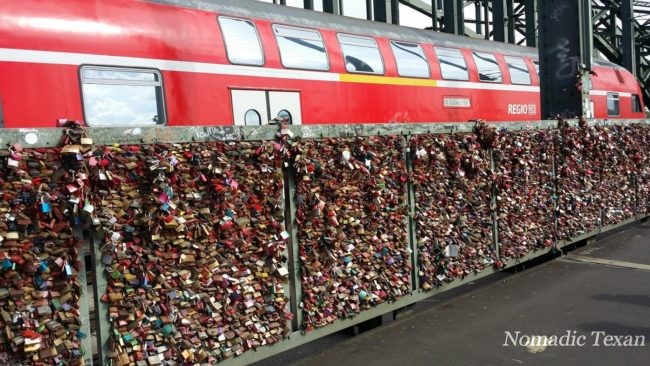
Hohenzollernbrucke Bridge Lovers Padlocks
As we walked across the Rhine on the Hohenzollernbrucke Bridge I was struck by the outlandish number of padlocks. Across Europe and other parts of the world it has become common place for lovers to state their affection for one another by writing a phrase on a padlock, attaching it to the bridge and tossing the keys away. At first I thought it was a unique form of passion and was truly a way to express one’s love for another. After traveling so much and seeing so many locks across the world it has become rather common and has horrible implications once the bridge becomes filled with locks. What happens to the padlocks when the locks fill the bridge and they have to be removed for safety reasons? Are they thrown away in refuse dumps? Are they melted down and reused? Who knows, but it is a concern for me. It has become an eyesore in some people’s mind. I would love to know the answer. If you have experience with this please comment and let me know. I would appreciate your feedback.
So it’s on to Koblenz and the Middle Rhine. If you haven’t experienced this section of the Rhine river you have a world of castles and architecture you are missing. #myvikingstory #vikingcruises
***Portions of our cruise were sponsored by Viking River Cruises. All opinions, as always, are those of my own.
